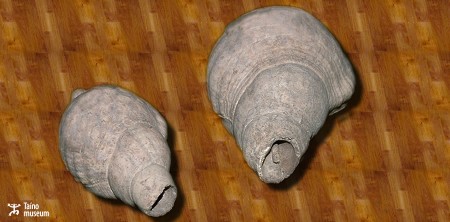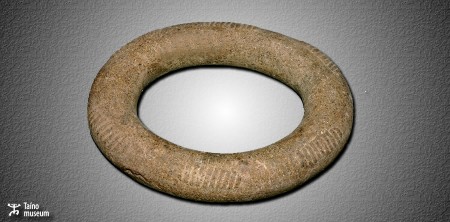Shell of the species Charonia variegata with an orifice at its apex. This shell which is abundant in the waters surrounding the island was very useful, first as a food and also as a household item and for body ornaments. In this case it was made into a musical instrument some sort of a trumpet.…
Read more
Fotuto shell musical instrument










